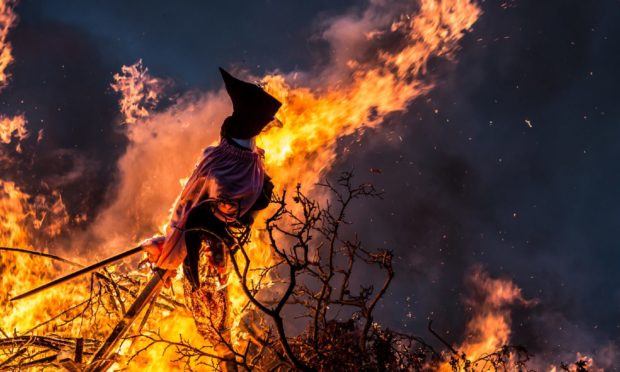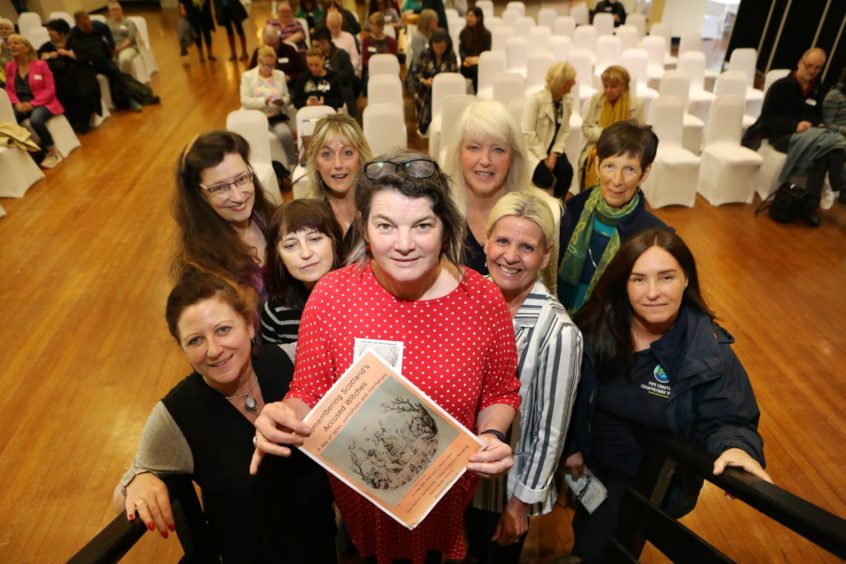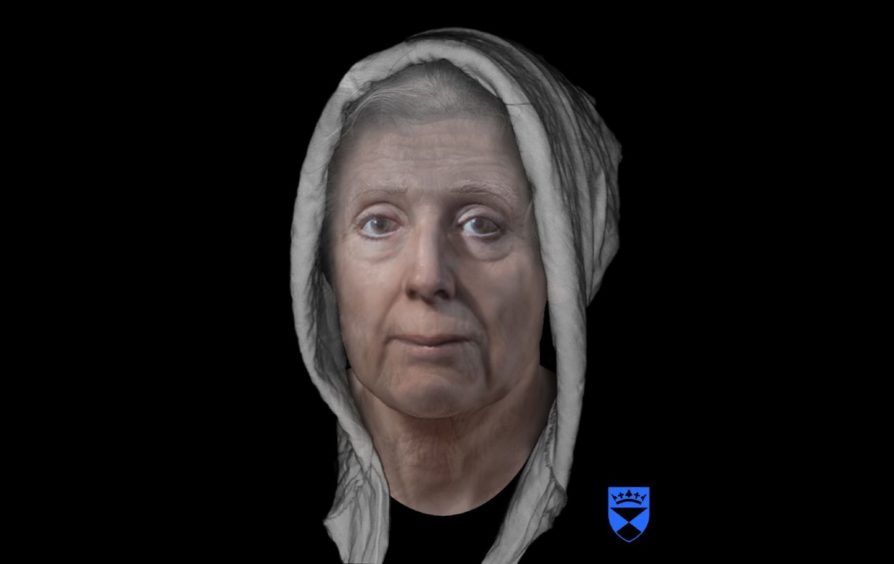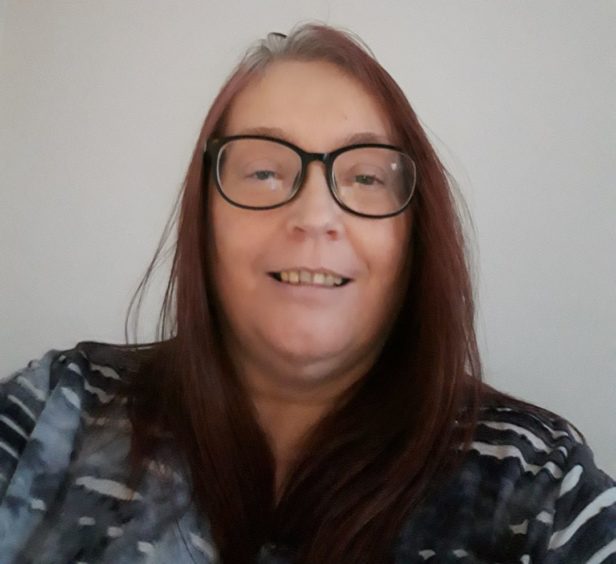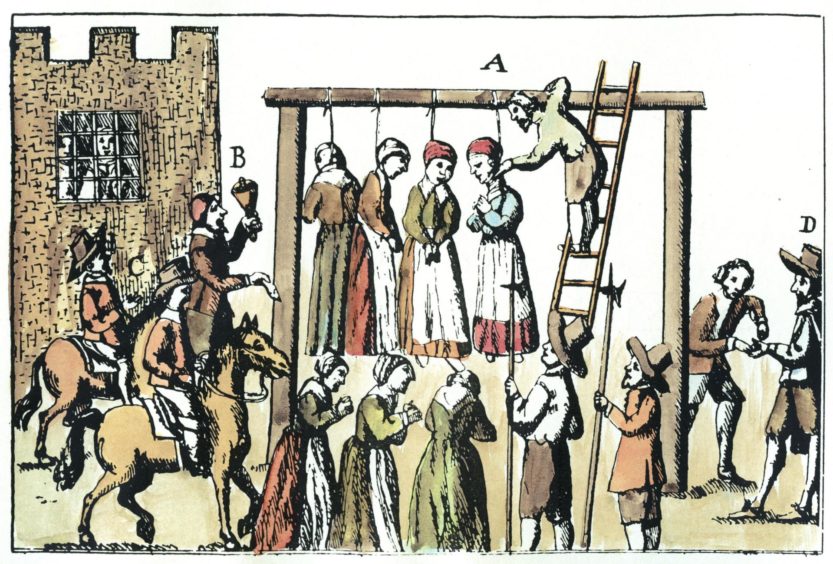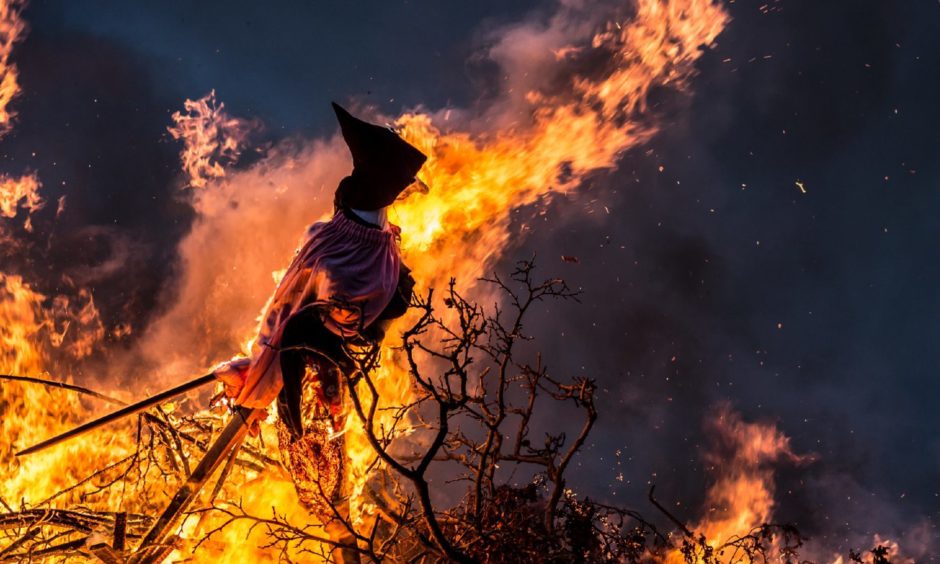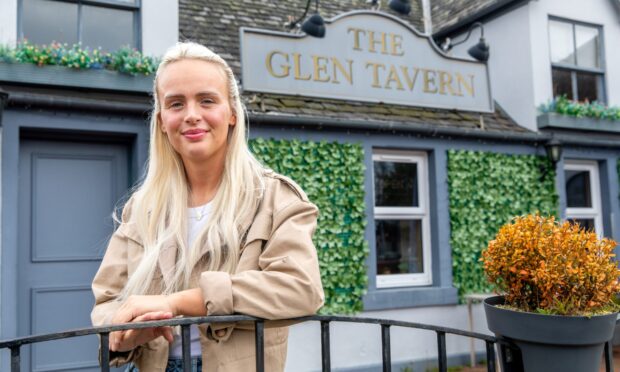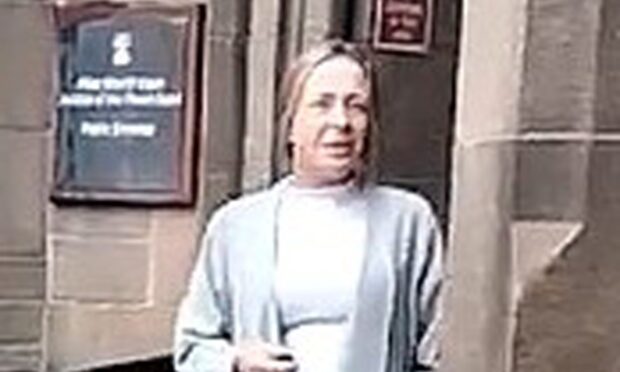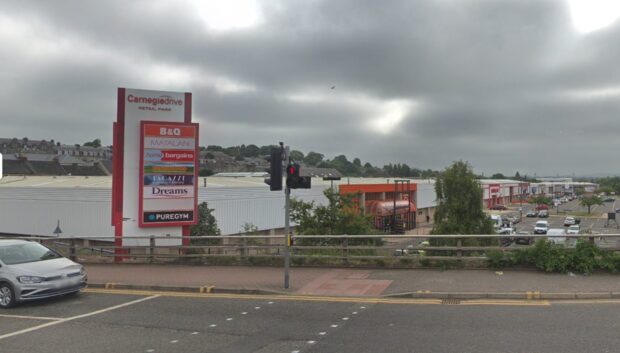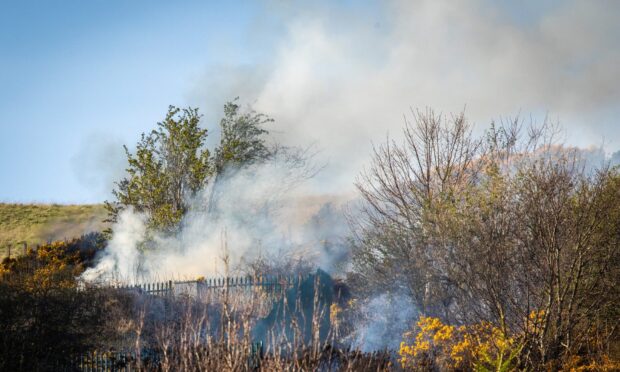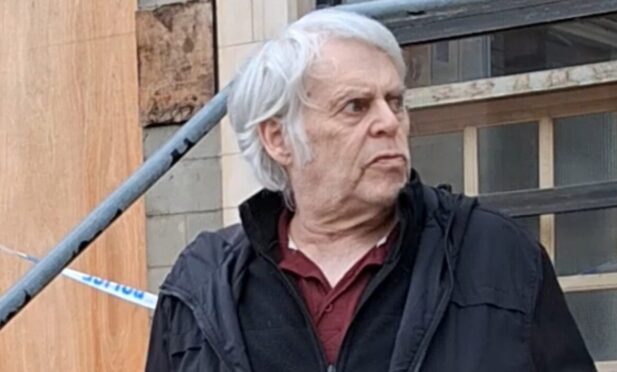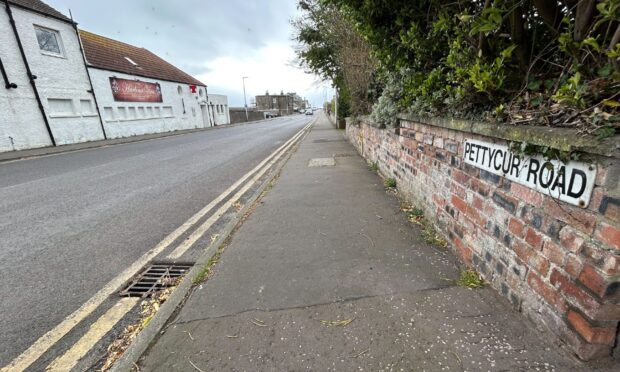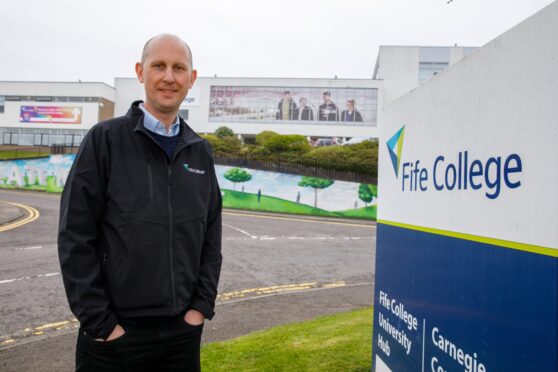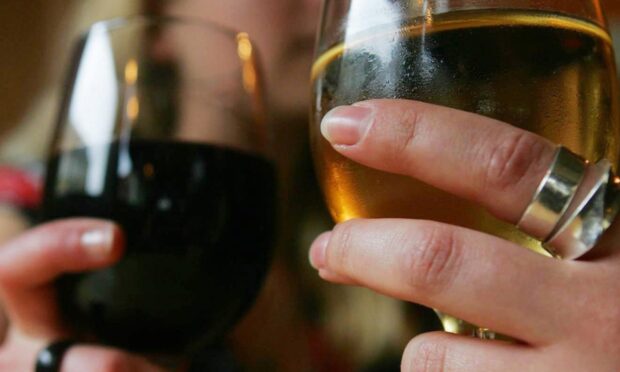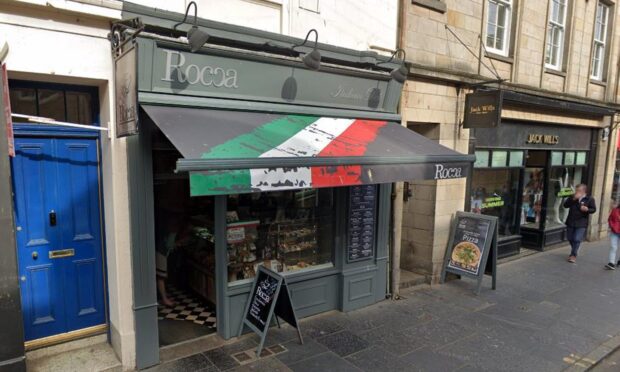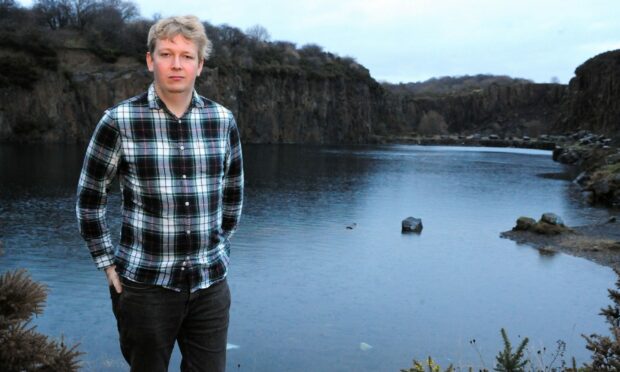Michael Alexander speaks to Sheila Gaul, Fife-based chairperson of Remembering the Accused Witches of Scotland, which is stepping up its campaign for a memorial and pardon for ‘witches’.
Growing up in Angus and Fife where her Black Isle-raised father worked as a dairyman, Perth-born Sheila Gaul has always had an interest in the infamous witch hunts that took place in 16th and 17th century Scotland.
On trips to Dornoch as a child, she learned about Janet Horne – the last person to be executed legally for ‘witchcraft’ in the British Isles in 1727.
Having gone to school in Anstruther and having later settled in Crail where she’s now lived for 25 years, she also knew about some of the local tales – including Janet Cornfoot who was accused of witchcraft and murdered by a lynch mob in Pittenweem in 1705.
However, it wasn’t until 2019 after ill health forced her to give up her employment in social work, that the former nurse appreciated the true scale of the witch trials that saw around 4000 people in Scotland accused of witchcraft between 1563 and 1736.
Fife campaign launch
The revelation for Sheila came when she attended an International Women’s Day event organised by local studies officer Sara Kelly together with Fife councillor Kate Stewart.
Kate having an interest in Lilias Adie – the accused revenant witch of Torryburn- and Sara having a general interest in witch trials came together for a lecture Sara had organised in Dunfermline.
Kate, having read an article about the lack of monuments to the accused witches of Scotland, shared this with the attendees of the lecture, and it became clear that a memorial would be a good idea.
After further discussions and a conference, a group called Fife Witches Remembered was created.
Ideas taken forward were to raise awareness of the accused witches of Scotland; to create and maintain a national monument to all the accused; to gain a full legal pardon for those found guilty of witchcraft in Scotland and to get an apology from the Scottish churches.
Sara and Kate have since put together the Accused Witches’ Trail that was launched in Culross.
They invited Claire Mitchell QC with her newly formed Witches of Scotland campaign to open the trail.
But with the group having changed its name to Remembering the Accused Witches of Scotland (RAWS), and in the process of applying to become a registered charity, Sheila, who is the first chairperson of RAWS, says a lot of work still has to be done.
Not about pointing finger of blame
A start, she says would be recognition from the powers-that-be – government and church – that this period of history was “shocking and awful”.
However, she emphasises it’s not about pointing the finger of blame.
“Because we are grassroots and voluntary, we are hoping to be a charity and to get some funds,” she says.
“We are looking for a piece of land for a memorial on the coast – ideally in Fife due to Lilias Adie and the other well-known witches.
“We have approached the Scottish Government about the need for this.
“When it comes to an apology from the church and state, however, we’re looking for more of a recognition that an historic wrong was done.
“We can’t change the past. This was obviously a huge period of time when the state and church worked together to terrorise the population.
“We need some recognition of their part in it and their support going forward.
“We certainly don’t want to assign blame because that would serve no purpose.
“We don’t want to antagonise and upset people in the church today because they haven’t done anything wrong – it was people 400 years ago.
“But an acknowledgement that witch hunting was misplaced needs to be recognised and atoned for in some kind of way.
“We can’t even say it was Protestants or Catholics. It would be very easy and very blinkered to say one side or the other did wrong.
“Actually nobody came out of it well – the state, the crown, the Catholic or Protestant church.”
Campaign is a ‘joy’
Sheila says being involved with this project has “been a joy” due to her interest in Scottish history and indeed the history of women.
The group, she says, are also working on a VR project with masters students at Abertay University.
Essentially the idea is to make an augmented reality project that would place memorial markers and/or virtual monuments in locations identified according to Edinburgh University’s Survey of Scottish witchcraft database.
But she finds herself particularly fascinated and disturbed by the role of King James VI of Scotland and I of England.
“King James was such a good propagandist he legitimised the witch trials and the belief that the devil was his greatest enemy and he himself the godliest king and a mighty warrior against the devil and his witches,” she says.
“If you put him into context though, his dad was murdered by his mother allegedly, his mum ran off with someone else then is captured by the Queen (Elizabeth I), he was fed propaganda from the protestant end of it. John Knox was his tutor. He was probably to all intense and purposes paranoid and this fed down through society.”
Of the 4,000 or so people accused of being witches in Scotland between 1563 and 1736, about 85% were women and 15% were men with about two thirds of them being executed.
Reasons to have the finger pointed at you included simply being a quarrelsome person, being a troublemaker, not attending church, not having a husband, being old, or being perceived as “odd”.
King James took a personal interest in witch trials due to his betrothed Ann of Demark being unable to sail to Scotland because of stormy seas.
James also suffered difficult and stormy seas when he went to Denmark to collect Ann.
When he reached Denmark he found the views were that witches had attempted to prevent the marriage and with James being so godly, the devil had it in for him and therefore he believe that Danish and Scottish witches were out to get him.
“Being accused put you in terrible peril,” says Sheila.
“You could be let off, as Lilias Adie had been and then years later be accused again and this time not so lucky. You might have become outcast in the community for the suspicion of being a witch.
“Horrific tortures included ‘walking and waking’ when you would be kept awake for days and have a couple of men making you walk round and round until your feet bled.
“The minister shouting at you that you were a servant of the devil and your immortal soul was at risk.
“This was the most common form of torture to get a witch to confess and name other witches.
“Sleep deprivation has been out lawed by the Geneva Convention but many of the other forms of torture that were used during this time are still in parts of the world used today.”
Modern parallels to mob rule?
Three centuries may have passed since witch hunts were outlawed.
However, for Sheila, they don’t feel like they are that long ago in history.
She believes a lot of the circumstances and social changes that took place then have parallels with what is happening in the world today – it’s just a “different enemy”.
“Look at Donald Trump,” she says.
“The way he whipped up people into a frenzy where they descended on Congress.
“Comparisons could be made with the way in which people in Pittenweem were whipped up by the church to lynch and murder Janet Cornfoot in 1705.
“The rhetoric is very similar. A divided society. The circumstances that make people react in a way that they probably wouldn’t normally react.
“Right now we’ve got the perfect storm for unrest. We are going through a global pandemic which is making peoples’ lives insecure and when people are feeling insecure and uncertain of the future they are easily panicked into doing things they wouldn’t normally do.
“Here, we’ve got huge social changes like Brexit. The possibility of an independent Scotland is a huge social change.
“One of the things about the times of the witch trials is that there were plagues, crop failures, change, Covenanters, John Knox wandering around telling everyone they are ‘going to hell’.
“He himself was a bit of a misogynist – he felt women were second class citizens. There was stuff boiling away.
“We have a similar situation now – we have a ‘plague’, we’ve got political unrest, we’ve got lots of social change going on. There’s an uncertain future. Conservatives trying to vilify immigrants. ‘It’s all their fault’ without people understanding what’s behind that.
“When people are panicked and scared they do stupid things.”
Time to face up to Scotland’s past?
Sheila believes the Scottish people and nation are strong enough to come to terms with our past and what our ancestors did no matter how awful it has been.
“We must reckon with this past,” she adds, “but we need to be careful not to impose modern day standards to the past.
“The power imbalance during the time of the witch trials has to be recognised and those brave innocent people caught up in all the hysteria need to be remembered and given back their dignity remembering they were victims of an injustice.”
